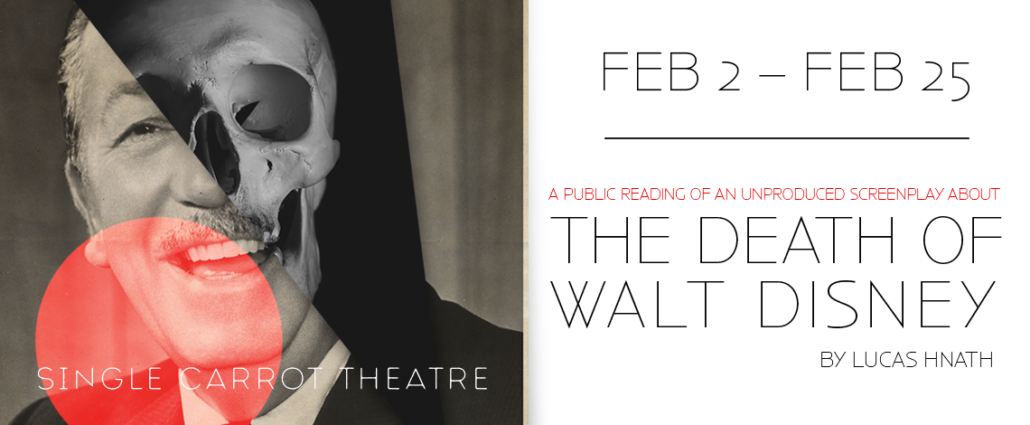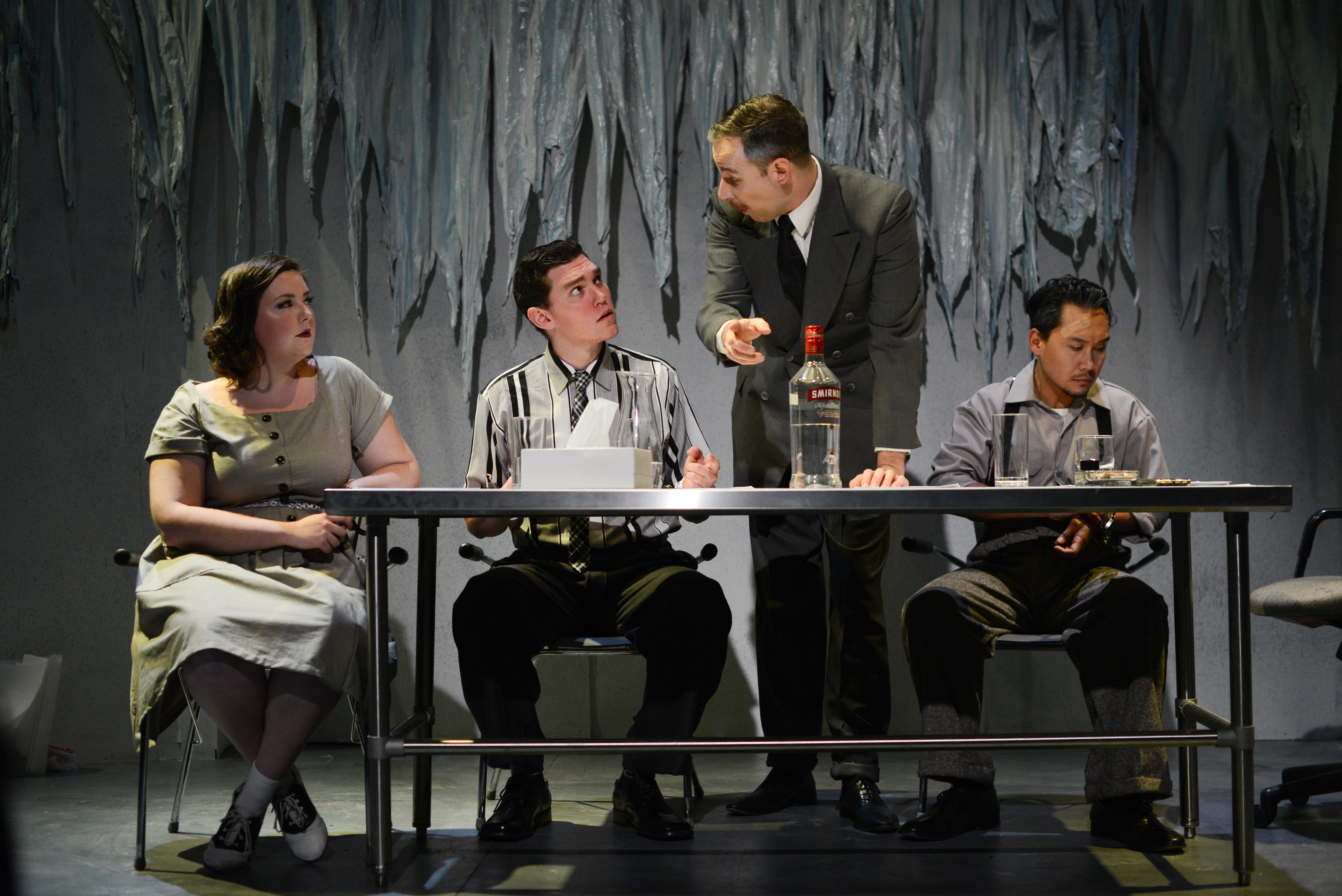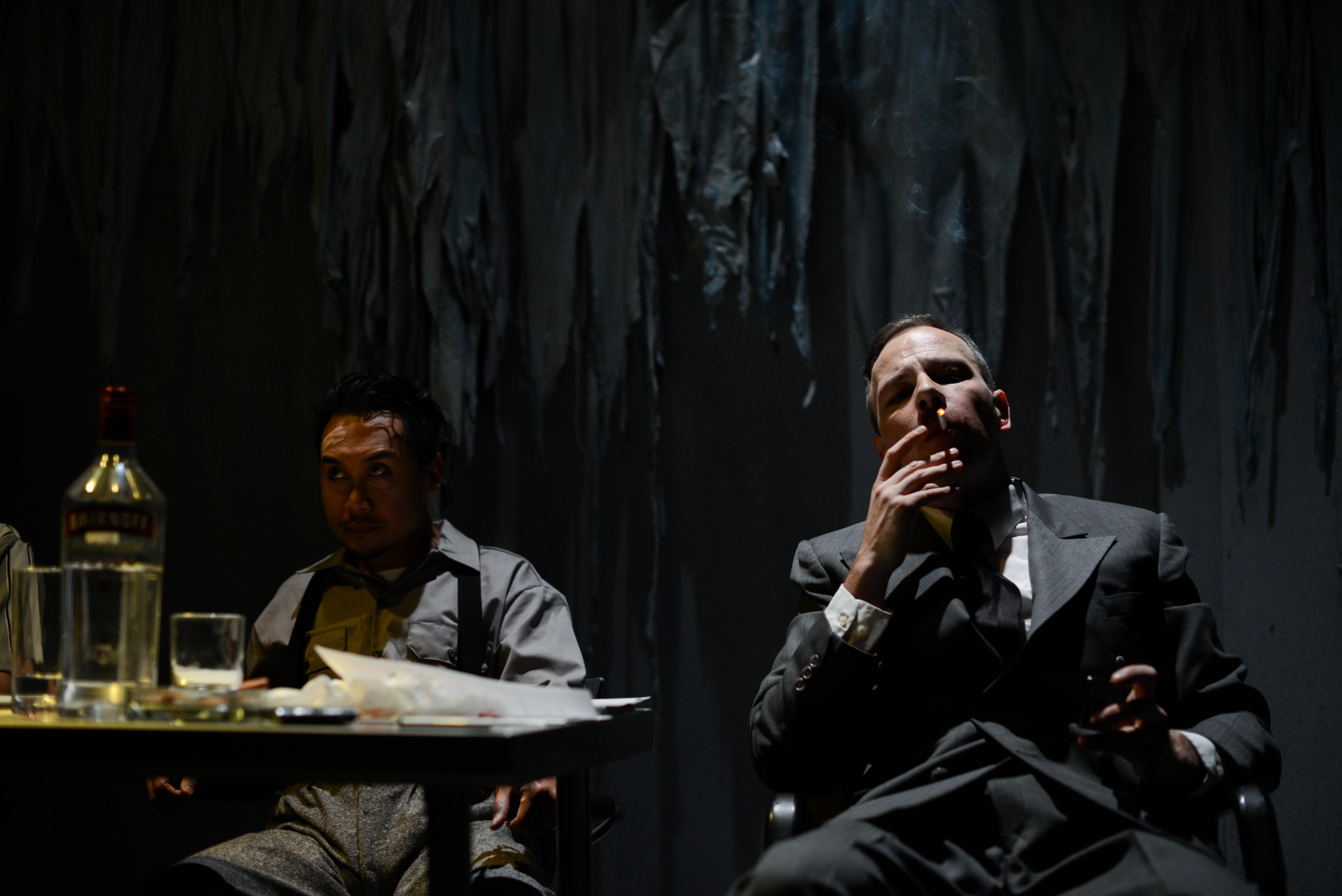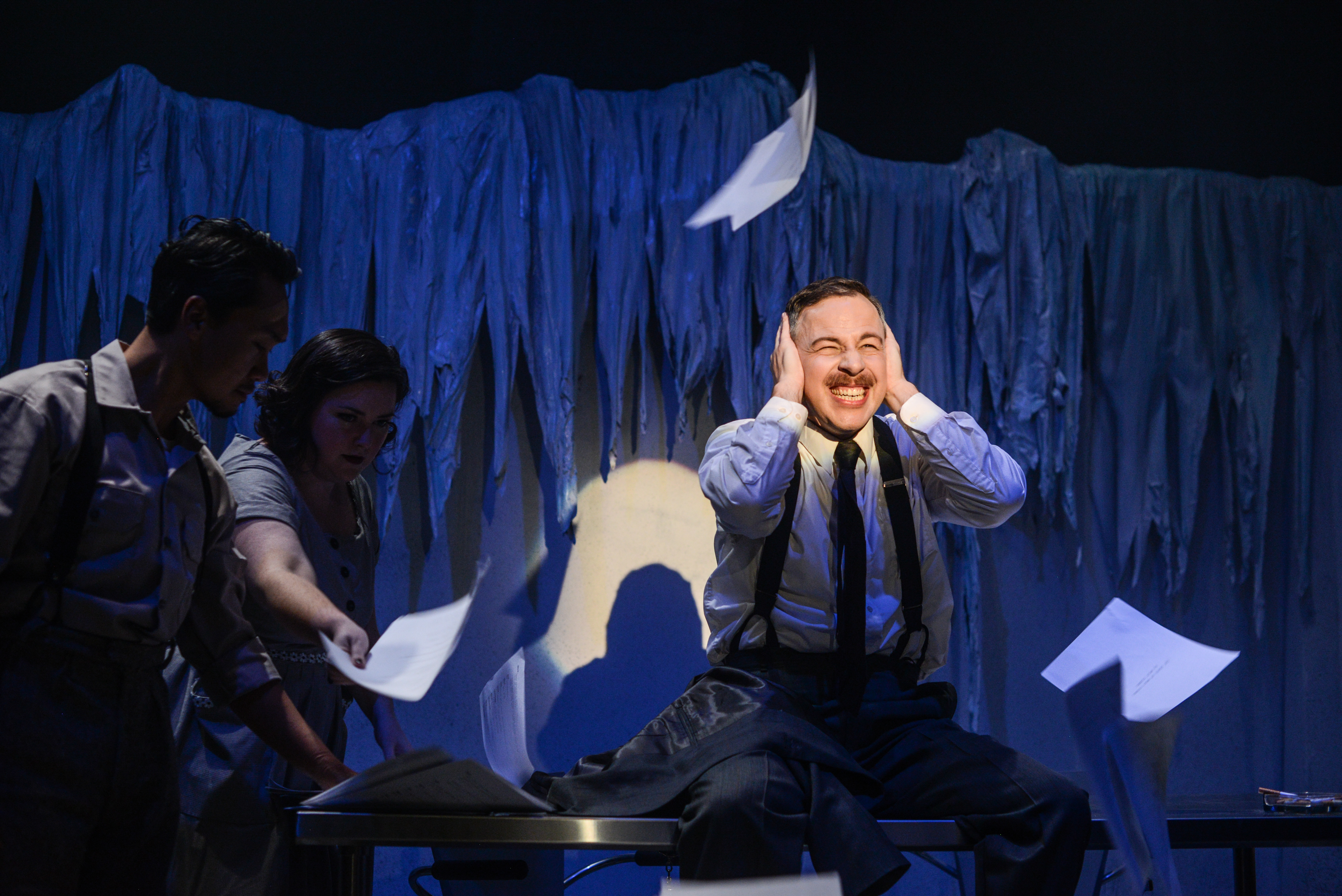By Jason Crawford Samios-Uy
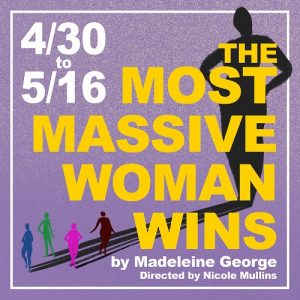
Running Time: Approx. 1 hour with no intermission
Different genders have different problems and, just until recently (in the grand scheme of things) most women’s problems weren’t something people wanted to discuss publicly. Forget about biological issues, good society certainly didn’t want to discuss emotional problems. However, in Strand Theatre’s latest offering, The Most Massive Woman Wins by Madeleine George, Directed by Nicole Mullins, makes no bones about touching on troubling women’s issues. Mainly concerning itself with body image, this piece also touches on emotional abuse, mother-daughter relationships, romantic relationships, and motherhood, among a plethora of other topics. It’s a show one needs to experience, even if to just get a smidgeon of an idea of what an number of women are possibly going through this very moment.

(l-r) Jess Rivera, Kaitlyn Fowler, Molly Boyle, Penni Barnett. Credit: Strand Theatre
Briefly, The Most Massive Woman Wins concerns itself with four women, Carly, Rennie, Sabine, and Cel, who are in the waiting room of an office (presumably) offering surgical cosmetic procedures. During their wait, they each tell the audience, and, at times, each other, their stories which include fat-shaming, troubled romantic and mother-daughter relationships, marriage, sexual urges, and self-harm, just to name a few. For reasons of their own, these women seem to believe cosmetic surgery is going to “fix” whatever problems they have, but each seems to have at least a sliver of doubt as to why they are there. As each woman takes the spotlight to tell of their trials and tribulations, the audience is pulled in and it’s not as though these women are looking for concrete answers, but needs the therapeutic process of just telling their truth.
Director Nicole Mullins seems to have a good grasp of this material and presents it in a minimal, but immersive way. It’s a deep, dramatic piece and delivery of the dialogue must be handled carefully and, for the most part, Mullins is able to guide her actors to effective performances, but, once in awhile, not often, the delivery does seem a bit over-dramatic. In fairness, this could be a director choice or an actor choice, so, there’s that. However, this is from a male reviewer, so, you can take that with a grain of salt. Overall, Mullins does a brilliant job with this piece and has given the audience an efficient, poignant presentation and should be applauded for her work.
Set and Lighting Design by Amy Rhodes is minimal, but engaging. The small space is transformed into a waiting room at doctor’s office in full effect and the impressive design makes it easy to be immersed in the piece. Lighting Design works nicely as it is subtle enough not to interfere with the action and highlights each character when necessary, adding value to the production, as a whole. Along with this, the Costume Design by Maggie Flanigan works well, giving each character a distinctive, individual look that matches their personalities. Though written in the 90s, it’s a timeless piece and the Set/Lighting Design and Costume Design are, as well. Kudos to Rhodes and Flanigan for their efforts.
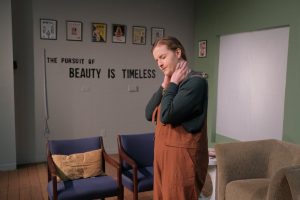
Kaitlyn Fowler. Credit: The Strand Theatre
Since this is a stream-only presentation, a word or to must be said about Video Production by Glenn Ricci. Ricci is spot on with his superb camera work, keeping the production flowing, letting the actors do their thing as it is captured in a flowing design. It’s not just setting a camera or two up in the seating area and pressing record… not at all. Ricci makes an effort to keep it interesting with sweeps and follows that really get us up close and personal with the characters, adding great value to the production and keeping us engaged. Major kudos to Ricci for excellent videography.
Moving on to the performance aspect, it’s worth saying this small ensemble, a quartet, works to make this production all it can be. Their efforts are not in vain as each brings her own individuality to the stage as well as finds a way to blend in with their fellow actors. Though the scenes concentrate on each character, individually, the four actors have great chemistry that connects them, which is no small feat in a piece such as this. It’s a delicate balance, but these four make it work beautifully.
Penni Barnett takes on the role of Sabine, a slightly older character and one who seems to have had a few more life experiences than the other characters and also seems to be at her sexual peak. Barnett makes some good choices with her character and isn’t afraid of the dialogue or situations, express the sexuality of her character without a second thought, making for a solid performance. There are a few moments when the connection is broken as she sounds a bit scripted, but they are few and far between, not having an effect on the overall quality performance she gives.
Taking on the role of Rennie is Molly Boyle and she seems to have a good comprehension of her character and what she has gone through. Her character concentrates on an estranged relationship with a mother and it’s a relatable situation. Boyle’s natural delivery brings the audience in and makes you feel for her character, and want to help in some way. She portrays a character with a solid outer shell but a broken inner self and it comes across splendidly making for a strong performance.
Kaitlyn Fowler as Cel is a highlight in this particular production. Her portrayal is authentic and engaging as she clearly portrays a vulnerable character who seems to have been pushed into this appointment by a domineering husband who has gotten into her head. It’s a story that’s more common than not, unfortunately, but through her delivery of the dialogue, one begins to understand how someone can get themselves into this type of situation. Overall, her superb performance makes on take notice and she should be commended for her exceptional performance.
Lastly, but certainly not least, Jess Rivera is a standout in her portrayal of Carly, a down to earth, strong (though she may not know it) woman who is there because of her body image issues that, seemingly, she’s been dealing with throughout her entire life. Rivera is passionate and brings that raw passion to her character as she brings this woman’s story to the audience. She’s a great fit for this character and understands the anger, pain, and yearning in Carly, and portrays it excellently. Kudos to Rivera for her outstanding performance in this production.

Jess Rivera. Credit: The Strand Theatre
Final thought… The Most Massive Woman Wins from The Strand Theatre is a no-holds-barred, intimate look in to the tribulations woman have to endure on a daily basis. The actors handle the material quite well, and though sometimes it seems a bit melodramatic, its effective enough not to be a hindrance to the performance. This small ensemble is giving 100% effort and deserve kudos for their wonderful performances. I have to mention, being an online only presentation, The Strand Theatre got it right! Videography is thought-out and top notch, making for a pleasant viewing experience. Though slightly dated, as the producers state in the beginning of the stream, it’s an important piece that should be experienced to give insight to the many unspoken issues women have to deal with and overcome. This delving, poignant piece of theatre is not to be missed. Get your tickets now.
This is what I thought of The Strand Theatre’s production of The Most Massive Woman Wins… What did you think? Please feel free to leave a comment!
The Most Massive Woman Wins will play (streaming only) through May 16. Click here for ticket info.
Email us at backstagebaltimore@gmail.com
Like Backstage Baltimore on Facebook!

